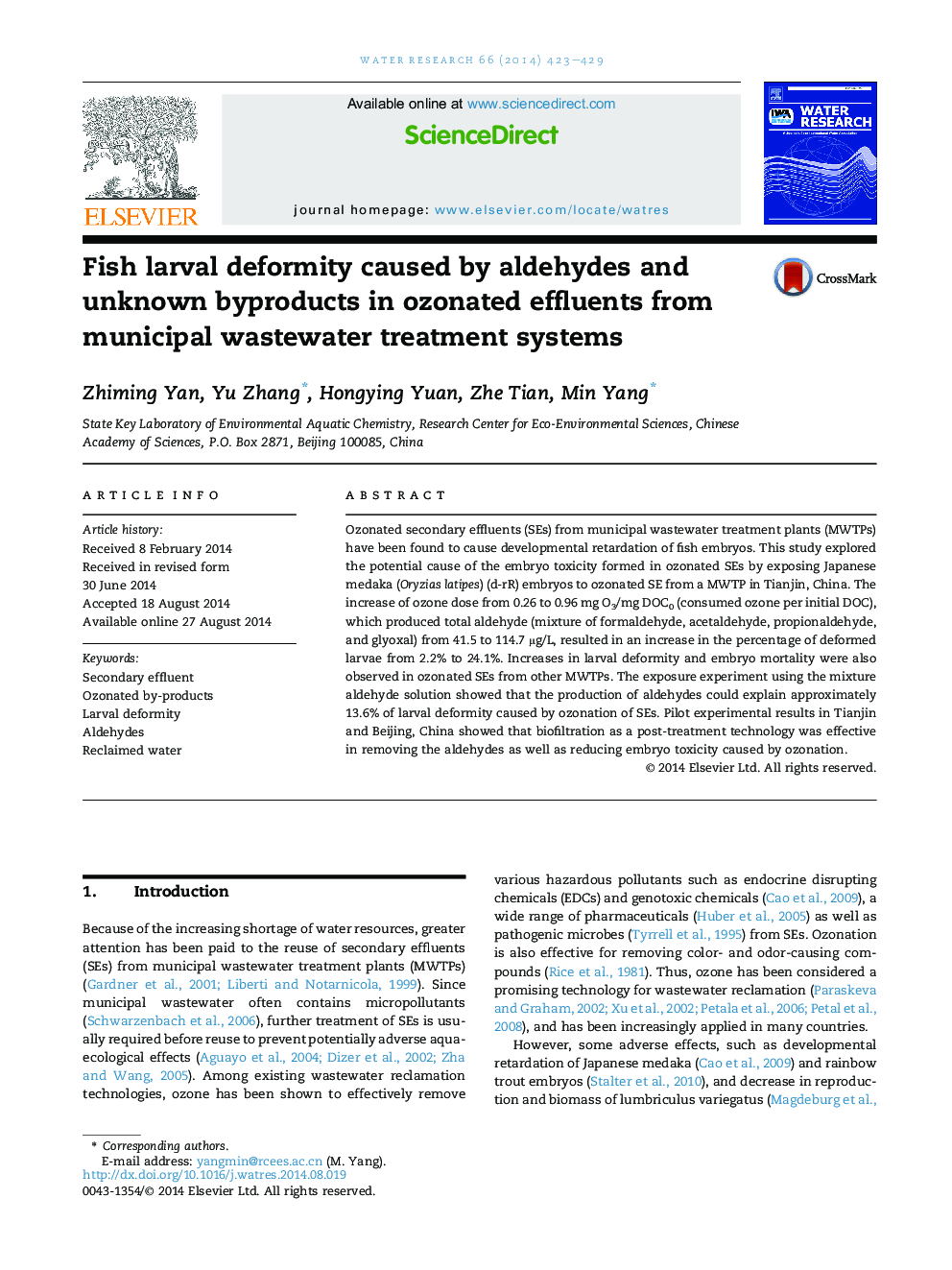| Article ID | Journal | Published Year | Pages | File Type |
|---|---|---|---|---|
| 4481411 | Water Research | 2014 | 7 Pages |
•Ozonated SEs cause larval deformity of fish embryos.•Aldehydic compound is a major OBP in ozonated SEs.•Aldehydes were partly responsible for the larval deformity.•Post-biofiltration is effective to control adverse effects of ozonation.
Ozonated secondary effluents (SEs) from municipal wastewater treatment plants (MWTPs) have been found to cause developmental retardation of fish embryos. This study explored the potential cause of the embryo toxicity formed in ozonated SEs by exposing Japanese medaka (Oryzias latipes) (d-rR) embryos to ozonated SE from a MWTP in Tianjin, China. The increase of ozone dose from 0.26 to 0.96 mg O3/mg DOC0 (consumed ozone per initial DOC), which produced total aldehyde (mixture of formaldehyde, acetaldehyde, propionaldehyde, and glyoxal) from 41.5 to 114.7 μg/L, resulted in an increase in the percentage of deformed larvae from 2.2% to 24.1%. Increases in larval deformity and embryo mortality were also observed in ozonated SEs from other MWTPs. The exposure experiment using the mixture aldehyde solution showed that the production of aldehydes could explain approximately 13.6% of larval deformity caused by ozonation of SEs. Pilot experimental results in Tianjin and Beijing, China showed that biofiltration as a post-treatment technology was effective in removing the aldehydes as well as reducing embryo toxicity caused by ozonation.
Graphical abstractFigure optionsDownload full-size imageDownload high-quality image (157 K)Download as PowerPoint slide
